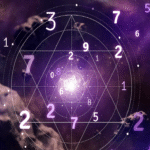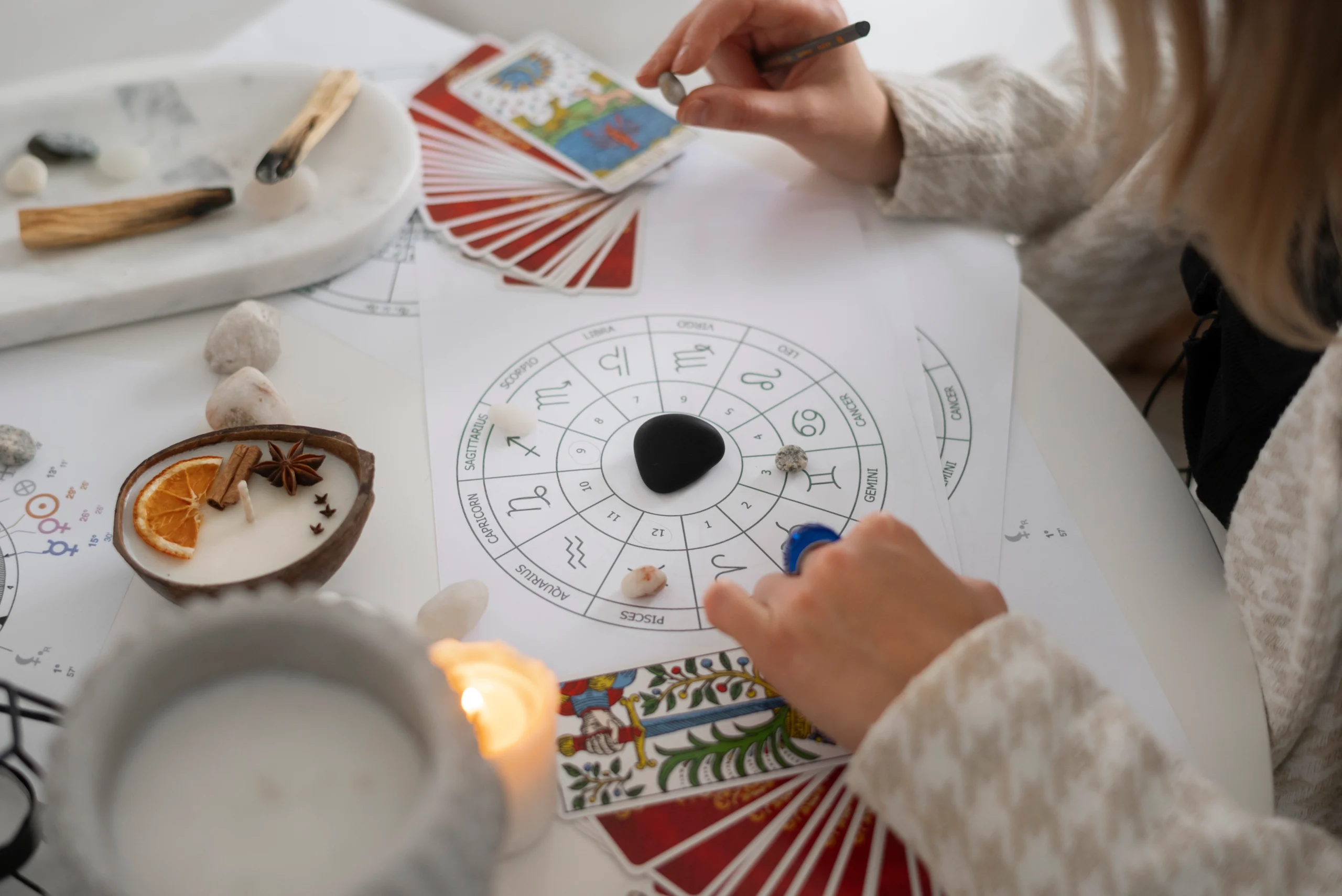Introduction: The Celestial Foundations
Namaste and welcome! Today, our council delves into one of the most sophisticated and revealing techniques in Jyotish (Vedic Astrology): the Varga charts, or Divisional Charts (also called Amshas). While the main Rasi chart (D1 Kundali) shows the overall life landscape, the Vargas act like microscopic lenses, magnifying specific areas of life or dimensions of a Graha’s influence. We will discuss Divisional Charts (Vargas), exploring why they are essential for nuanced Vedic Astrology Interpretation and how key Vargas like the Navamsa (D9 Chart) provide critical insights beyond the basic Natal Chart Analysis.
The Participants:
- Acharya Vargottama: A Traditional Jyotishi, master of Varga calculation and classical interpretation.
- Dr. Suchita: A Contemporary Jyotishi, applying Varga insights to modern life complexities.
- Vidya Student: A Dedicated Student, learning the daunting yet rewarding system of Vargas.
- Phala Advisor: A Practical Application Expert, using Vargas for precise predictions and guidance.
- Moderator: Guiding our discussion on these vital sub-charts.
Round 1: Understanding Divisional Charts (Vargas) – The Concept
Moderator: Let’s establish the basics. Acharya Vargottama, what are Varga charts, and why are they used in Jyotish?
Acharya Vargottama: The Vargas are harmonic divisions of the Rashis (signs). Each Rashi spans 30 degrees; this span is divided into a specific number of equal parts (e.g., 9 parts for Navamsa D9, 10 parts for Dasamsa D10). The specific segment a Graha occupies in the Rasi chart determines its placement in the corresponding Varga chart. Parashara, the father of Jyotish, emphasized Vargas greatly (Shodasha Vargas – 16 Vargas). They reveal the intrinsic strength and functional potential of a Graha related to the Varga’s specific domain. A planet might look strong in the Rasi chart (D1) but be weak in a relevant Varga, thus failing to deliver expected results for that Varga’s area of life (e.g., career for D10). They are essential for Advanced Vedic Techniques.
Dr. Suchita: Exactly. Think of the Rasi chart as a wide-angle photo of your life. The Vargas are like zooming in on specific details with high resolution. The Navamsa (D9 Chart), the 1/9th division, is considered the most important after the Rasi chart. It reveals the underlying dharma, inner strengths/weaknesses, fortune, and critically, the nature and timing of marriage and the quality of the spouse. A planet occupying the same sign in both the Rasi and Navamsa charts is called Vargottama, making it exceptionally strong and stable in its results.
Vidya Student: This sounds incredibly powerful but also intimidating! Learning the calculations for different Vargas, what each Varga represents, and how to interpret planets within them seems like a huge task. How do you know which Vargas are most important to look at? And how do you synthesize the information from the Rasi chart and multiple Vargas?
Phala Advisor: It is complex, Vidya, but indispensable for accurate practical work. While Parashara listed 16, practitioners commonly focus on a core set depending on the query:
- D9 (Navamsa): Marriage, spouse, dharma, overall strength, fortune. Absolutely essential.
- D10 (Dasamsa): Career, profession, status, achievements in society. Vital for career analysis.
- D3 (Drekkana): Siblings, courage, efforts, initiatives.
- D12 (Dwadashamsa): Parents, lineage, past life inheritance.
- D30 (Trimshamsha): Misfortunes, health specifics, character flaws (analyzed differently).
- D6 (Shasthamsa): Health, disease patterns (used in medical astrology).
- D2 (Hora): Wealth potential.
- D7 (Saptamsa): Children, progeny, creative potential. Synthesizing involves seeing if the promise (or lack thereof) in the Rasi chart is confirmed or denied by the planet’s strength and placement in the relevant Varga(s). A strong 10th lord in D1 but debilitated in D10 suggests career potential exists but faces significant obstacles or dissatisfaction.
Acharya Vargottama: The principle is ‘Phalam Varga Vasat’ – the results depend on the Varga placement. The strength shown in Vargas, especially Navamsa, reveals the true inner capacity of a Graha to deliver its promised results from the Rasi chart. Ignoring Vargas leads to superficial and often inaccurate Natal Chart Analysis.
Dr. Suchita: It also helps differentiate. Two people might have the same Graha in the same Rashi in the D1 chart, but their Varga placements can be vastly different, explaining why their experiences in marriage (D9) or career (D10) are unique. It adds layers of Vedic Astrology Interpretation.
Perspective Intersection: Traditional Jyotish emphasizes Vargas as essential for judging true planetary strength and results (Vargottama), contemporary practice uses them to add psychological depth and explain nuances (Suchita), students recognize their power but face the complexity (Vidya), and practical application relies on key Vargas (D9, D10 etc.) for targeted analysis (Phala Advisor).
Round 2: Common Misconceptions vs. Reality about Vargas
Moderator: Let’s clarify some potential misunderstandings. Dr. Suchita?
Dr. Suchita: A major misconception is thinking Vargas can be interpreted independently like mini-horoscopes. They always derive their meaning from and must be read in conjunction with the Rasi (D1) chart. A planet’s Varga placement modifies its Rasi potential; it doesn’t create a separate reality. Also, focusing only on Navamsa, while crucial, can mean missing vital information from other Vargas like Dasamsa for career.
Phala Advisor: Another misconception is applying Rasi chart rules (like aspects/Drishti or house lordships) directly within all Varga charts in the same way. While conjunctions and sign placements are key, the application of aspects and specific yogas within Vargas is a more advanced and sometimes debated topic among different schools. The primary use is assessing planetary dignity and placement relative to the Varga’s theme. Getting Divisional Charts (Vargas) analysis right requires understanding these nuances.
Acharya Vargottama: From tradition, a misconception might be neglecting the Vargas altogether, relying solely on the Rasi chart, which was perhaps more common before software made calculations easier. This leads to incomplete analysis. Also, the mathematical precision required for calculating Varga cusps (if using Bhava Chalit principles within Vargas) is often overlooked, yet it can shift planetary placements.
Vidya Student: I thought Vargottama automatically made a planet purely benefic. I learned it makes the planet strong and consistent in its results – which could be consistently challenging if it’s a functional malefic for the Lagna or poorly placed by house in the Rasi chart, right? Strength isn’t always ‘good’.
Hidden Wisdom: Pushkara Navamsa/Bhaga: Specific, highly auspicious degree segments within the Navamsa chart (and sometimes other Vargas) are called Pushkara points. Planets occupying these points gain exceptional strength and auspiciousness, capable of overcoming other weaknesses. Identifying these requires precise calculations.
Round 3: Historical Evolution & Future Directions
Moderator: How did the Varga system develop? Acharya Vargottama?
Acharya Vargottama: The concept of dividing signs harmonically is ancient, detailed extensively by Maharishi Parashara in Brihat Parashara Hora Shastra, where he outlines the Shodasha Vargas (16 divisions) and their purposes. Other sages like Jaimini also utilized Vargas. Their use demonstrates the incredible mathematical sophistication and depth of classical Jyotish, designed to reveal subtle layers of destiny. Calculating them manually was laborious, limiting widespread detailed use in the past.
Dr. Suchita: The advent of computers revolutionized Varga analysis, making the calculation of all major Vargas instantaneous and accurate. This has led to a resurgence of interest and deeper research into their application by contemporary Jyotishis. More focus is placed now on synthesizing Varga information for psychological understanding alongside predictive purposes.
Phala Advisor: Practical applications have become more refined. Career consultations now routinely involve detailed D10 analysis; relationship compatibility often goes deep into D9 comparisons. Medical astrology makes increasing use of D6 and D30. Software allows for easily checking Vargottama, Pushkara points, and planetary strengths across multiple Vargas simultaneously, enabling more comprehensive Advanced Vedic Techniques.
Vidya Student: For learners, software is a blessing and a curse! It makes Vargas accessible, but understanding the underlying principles and avoiding information overload is the challenge. Clearer pedagogical approaches explaining how to synthesize Rasi and Varga information effectively are needed. Future tools might offer better visualization of cross-Varga planetary strength.
Critical Considerations: While Vargas offer depth, over-reliance on obscure Vargas without mastering the Rasi, Navamsa, and key divisional charts can lead to speculative or overly complex interpretations. Accuracy of birth time is absolutely critical for Varga calculations, as even a small error can shift placements.
Closing Reflections: Integrating Wisdom – The Power of Zoom
Moderator: How should our audience best approach the Varga charts?
Phala Advisor: Understand that Vargas are essential for any serious Jyotish analysis beyond the surface level. Focus first on mastering the Rasi chart, then integrate the Navamsa (D9 Chart) thoroughly. Based on specific life questions, learn to utilize other key Vargas like D10 (career), D3 (efforts), D7 (children), D12 (parents). Use them to confirm or refine Rasi chart indications.
Vidya Student: Be patient! Don’t try to learn all 16 Vargas at once. Start with D1 and D9. Understand the concept of divisional calculation. Use software but strive to understand the principles. Appreciate the depth they offer over time.
Dr. Suchita: See Vargas as tools for nuanced self-understanding. How does your core potential (D1) translate into specific areas like relationships (D9) or career (D10)? Where are your hidden strengths or consistent challenges revealed by Varga placements? Use this insight for conscious growth.
Acharya Vargottama: Respect the Vargas as an integral part of the sacred knowledge passed down by the Rishis. Understand that true planetary strength and the fructification of results (phala) are deeply connected to Varga placements. Prioritize accuracy in calculation and interpretation based on classical principles. The Divisional Charts (Vargas) are keys to unlocking deeper layers of the karmic code.
Moderator: Thank you, council. The Varga charts are a testament to the depth and sophistication of Jyotish. While the Rasi chart provides the overview, the Vargas offer the crucial zoomed-in details, revealing the true potential and manifestation of planetary energies in specific domains of life. Mastering them is key to unlocking richer, more accurate Vedic Astrology Interpretation.
Further Learning
- Introduction to Nakshatras (Lunar Mansions) (Planets in Nakshatras within Vargas add another layer)
- Understanding Planetary Strength (Shadbala) and Dignity (Includes Varga strength)
- Navamsa (D9) Chart Deep Dive: Marriage, Dharma, Strength
- Dasamsa (D10) Chart Deep Dive: Career and Profession
- The Concept of Karma in Vedic Astrology (Vargas show karmic details)









